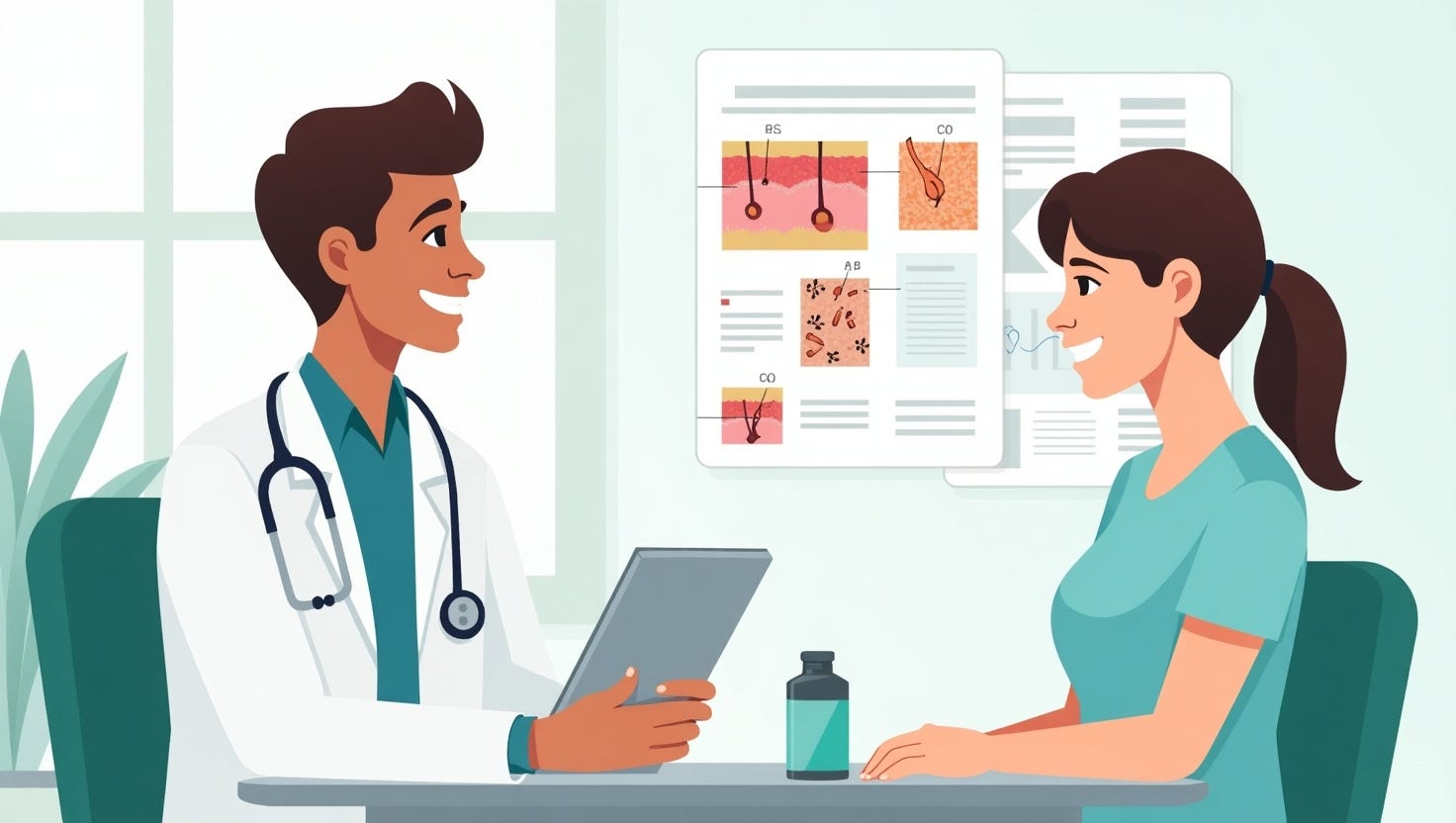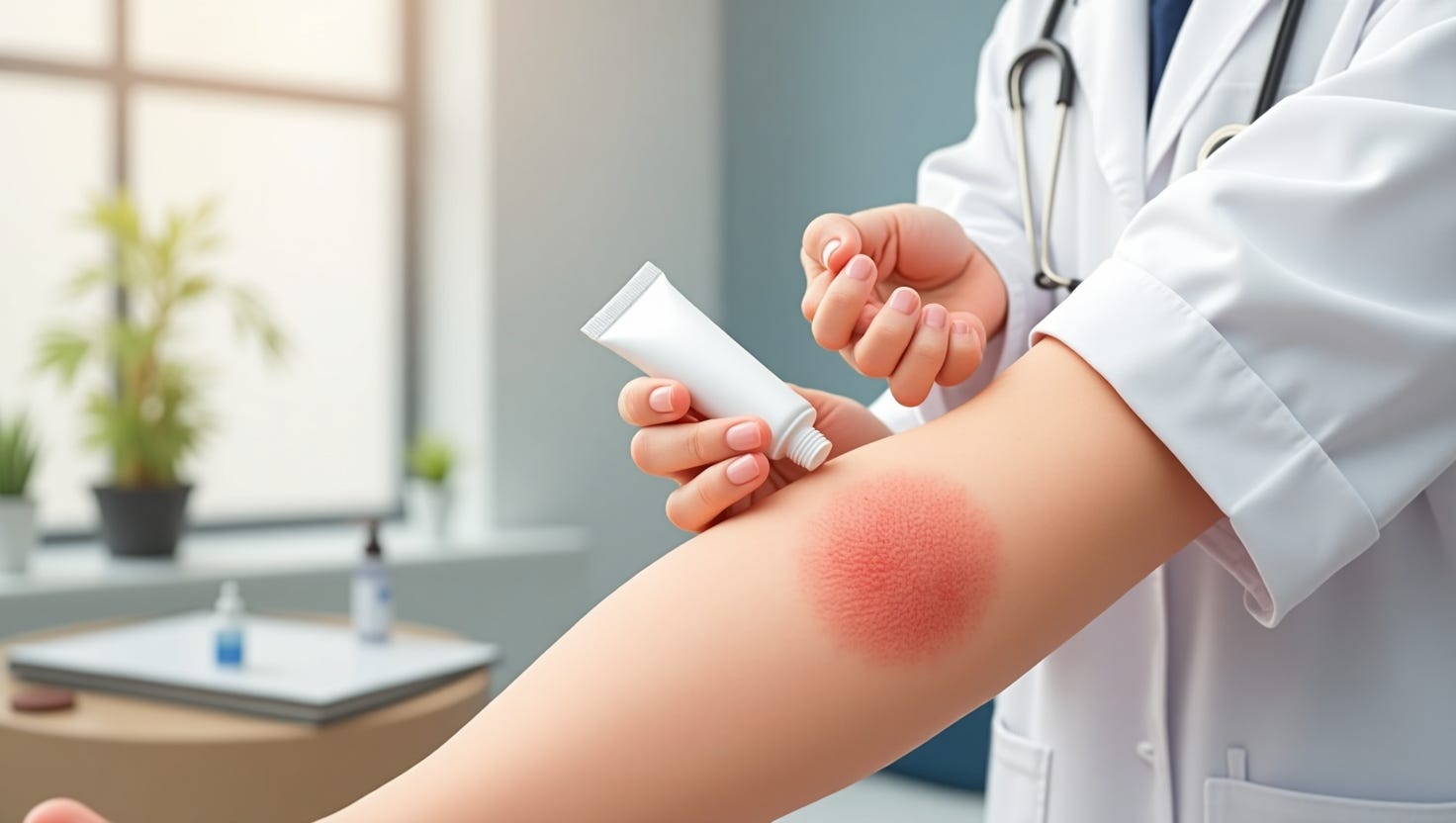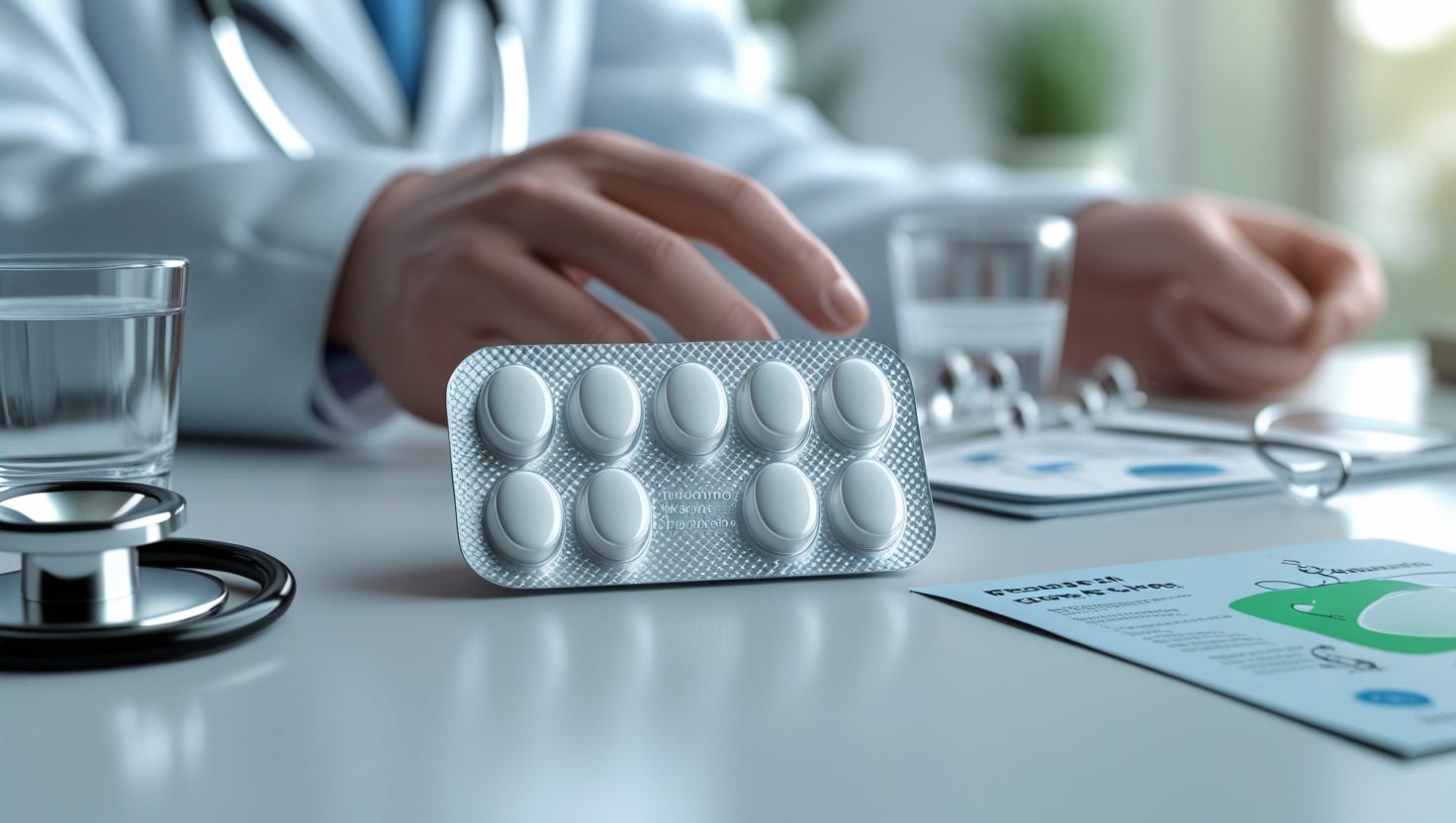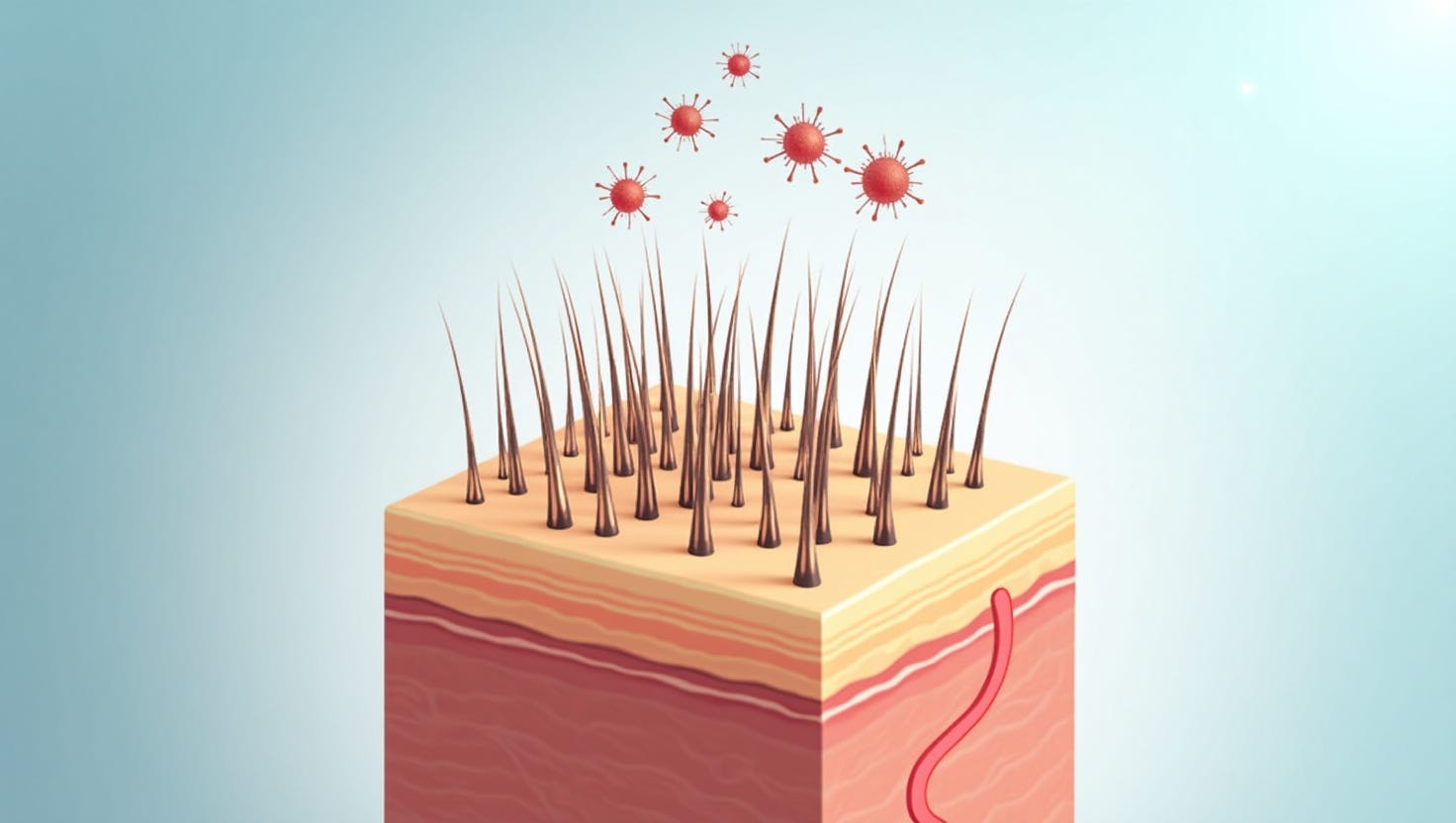Common Causes of Seborrheic Dermatitis

Table of Content
- Seborrheic Dermatitis: Overview
- Symptoms of Seborrheic Dermatitis
- Common Causes of Seborrheic Dermatitis
- Effective Solutions for Treating Seborrheic Dermatitis
- Managing Seborrheic Dermatitis with Lifestyle Changes
- When to Seek Medical Attention
Seborrheic dermatitis, a commonly occurring skin condition, predominantly targets the scalp but can extend its reach to other oily areas of the body. This condition is characterised by the presence of scaly patches, inflamed skin, and persistent dandruff, making it a source of discomfort for many. While in some cases, it may resolve on its own, a majority of individuals require ongoing management for effective symptom control. To effectively manage seborrheic dermatitis, it's crucial to comprehend its underlying causes and discover practical remedies. In this blog, we will not only delve into the roots of this condition but also provide informative insights into effective solutions for tackling its bothersome symptoms.
Seborrheic Dermatitis: Overview
Seborrheic dermatitis, also known as Seborrheic Eczema, primarily affects areas with high oil production such as the scalp, face, nose, eyebrows, ears, eyelids, and chest. It often presents as scaly patches, inflamed skin, and persistent dandruff. Fortunately, it's not contagious and doesn't lead to permanent hair loss.
Symptoms of Seborrheic Dermatitis
From persistent dandruff and flaky skin to greasy patches, here is the list of prominent Seborrheic dermatitis symptoms that must be followed with medical intervention.
- Flaking Skin: The most common symptom is the presence of flaking skin, commonly referred to as dandruff. This can occur in various areas of the body, such as the scalp, hair, eyebrows, beard, or moustache.
- Greasy Skin Patches: Affected areas may exhibit patches of skin that appear greasy and are covered with flaky, white or yellow scales or crust. These patches can manifest on the scalp, face, sides of the nose, eyebrows, ears, eyelids, chest, armpits, groin area, or beneath the breasts.
- Rash Variations: Seborrheic dermatitis can display different rash patterns depending on an individual's skin tone. In those with brown or Black skin, the rash may appear darker or lighter, while in individuals with white skin, it may appear redder.
- Annular Rash: In some cases, a specific type of seborrheic dermatitis known as "petaloid seborrheic dermatitis" can result in a ring-shaped (annular) rash.
- Itchiness: Pruritus or itchiness is often associated with seborrheic dermatitis, adding to the discomfort experienced by affected individuals.
It's important to note that the signs and symptoms of seborrheic dermatitis can worsen under certain circumstances, such as during periods of stress, fatigue, or seasonal changes.
Common Causes of Seborrheic Dermatitis
Although the precise origins of seborrheic dermatitis remain unclear, there are several factors that can trigger or exacerbate the condition. These factors encompass:
- Genetic predisposition
- Hormonal influences
- The presence of a yeast known as Malassezia
- Environmental factors
Stress, alongside the potential involvement of specific neurological conditions, might also contribute to seborrheic dermatitis causes.
Effective Solutions for Treating Seborrheic Dermatitis
Seborrheic dermatitis treatment involves a combination of strategies that are mentioned below:
- Medicated Shampoos: Specialised shampoos by Kaya contain active ingredients like ketoconazole, coal tar, or salicylic acid that help control the condition when used regularly.
- Topical Treatments: Creams, ointments, or foams containing corticosteroids or antifungal agents can reduce inflammation and yeast overgrowth.
- Proper Hygiene: Regular cleansing of affected areas with mild, fragrance-free cleansers can help prevent flare-ups.
- Antifungal Agents: Some healthcare providers may recommend antifungal medications for severe cases.
- Dietary Adjustments: While not a direct cause, certain dietary changes such as reducing sugar and processed foods may help manage symptoms of seborrheic dermatitis for some individuals.
- Stress Management: Seborrheic dermatitis natural treatment involves stress reduction techniques like yoga, meditation and relaxation exercises.
Managing Seborrheic Dermatitis with Lifestyle Changes
To complement medical treatments, consider the following lifestyle adjustments or Seborrheic dermatitis remedies:
- Avoid Harsh Products: Steer clear of harsh skincare or haircare products that can worsen inflammation.
- Moisturise: Using a gentle, hypoallergenic moisturiser can keep affected skin hydrated and reduce scaling.
- Sun Protection: Protecting your skin from excessive sun exposure can help prevent irritation and flare-ups.
- Consult a Dermatologist: If over-the-counter treatments aren't effective, consult an expert dermatologist from Kaya Clinics for personalised guidance.
When to Seek Medical Attention
While seborrheic dermatitis can be manageable through self-care and over-the-counter products, seeking medical attention is recommended in specific situations to ensure effective symptom management.
- Discomfort and Sleep Disturbance: If your symptoms are causing significant discomfort, leading to sleep disturbances, or interfering with your daily routines, it's important to seek medical advice.
- Emotional Impact: When seborrheic dermatitis affects your self-esteem or causes feelings of embarrassment or anxiety, it's worthwhile to consult with a healthcare provider.
- Suspected Infection: If you suspect that your skin may be infected due to seborrheic dermatitis, prompt medical evaluation is essential to prevent complications.
- Persistent Symptoms: If you have tried self-care measures but your symptoms persist or worsen, it is advisable to see a doctor for a more comprehensive assessment and treatment plan.
You can also consider a CONSULTATION WITH EXPERTS from Kaya Clinic to make an informed decision.










